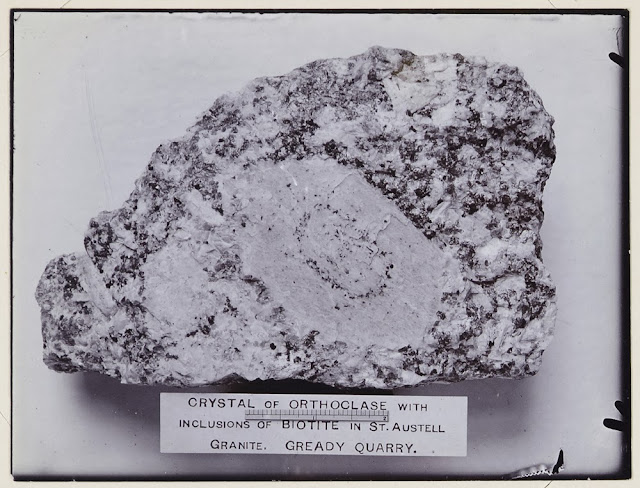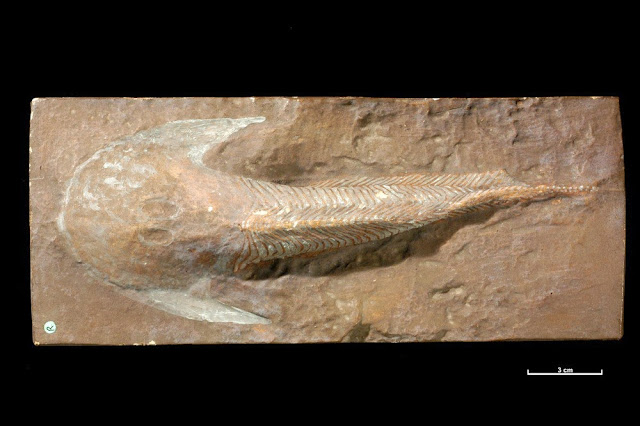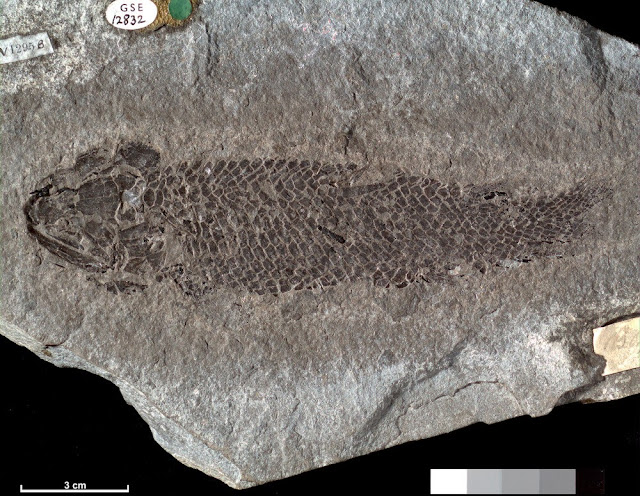 |
| BGS Image ID: P521397 |
The sample is a pale-coloured coarse-grained igneous rock with a distinctive granitic texture. It is technically a microgranite dominated by pale alkali feldspar crystals embedded in dark riebeckite amphibole and grey quartz. The distinctive granite of Ailsa Craig forms part of the vast Tertiary Igneous Province of northern Britain. These formed around 60 million years ago. Much of the distinctive scenery of areas such as Arran, Mull, Ardnamurchan, Rum and Skye, and the Antrim Mountains in Northern Ireland, were formed as a result of this huge outpouring of magma. Because these rocks are well exposed and preserved they have been studied in great detail by generations of geologists, and provide an opportunity to study the deeper levels or 'roots' of volcanoes, from which we can learn much about currently active volcanoes today. The riebeckite granite of Ailsa Craig forms a Tertiary granite boss rising out of the Clyde estuary. It is one of a series of Tertiary granites. This blue-grey microgranite is very distinctive and has been extensively used as a marker for tracing the flow directions of Quaternary ice-sheets.
 |
| BGS Image ID: P750285 |
 |
| BGS IMage ID: P001614 |
The stone has a tough fine-grained lithology and can take a very high polish. It was worked in two colours, the 'red' and 'blue' varieties, the former was rarer and was much preferred. The curling stones were the economically most significant and world-renowned resource of the island. 50 pairs were exported annually in the 1870's rising to 1000 pairs in the 1890's. The quarry restarted 1961 but becoming uneconomic closed again in 1973.
 |
| BGS Image ID: P000704 |
Oblique aerial view of the island of Ailsa Craig. Looking south towards the north end of the island. The island is a very prominent landmark in the Firth of Clyde formed of a microgranite boss. Ailsa Craig is formed of an arfvedsonite-aegirine-microgranite intruded by vertical dyke swarms of olivine to alkaline olivine-dolerite with basalt margins. Isotopic dating using the Rb/Sr isochron method dates the microgranite at 61.5 Ma. This makes it Tertiary in age. The remains of the castle can be seen on the skyline on the left. It was built on the orders of the Earl of Cassillis by Thomas Hamilton whose coat of arms may be seen on the walls.
The resistance of the microgranite to erosion compared to the response to the soft Permo-Trias sandstones into which it was intruded was of crucial importance during the phase of glacial erosion. The principal direction of the ice during the last glaciation was south. This is indicated by the slight broadening of the island from north to south, albeit that this outline has been considerably modified by later marine action. The precipitous cliffs are primarily the results of marine erosion but the initiation of a strongly positive topographic feature associated with the microgranite intrusion probably occurred during glaciation.
Posted by Bob McIntosh







.jpg)

